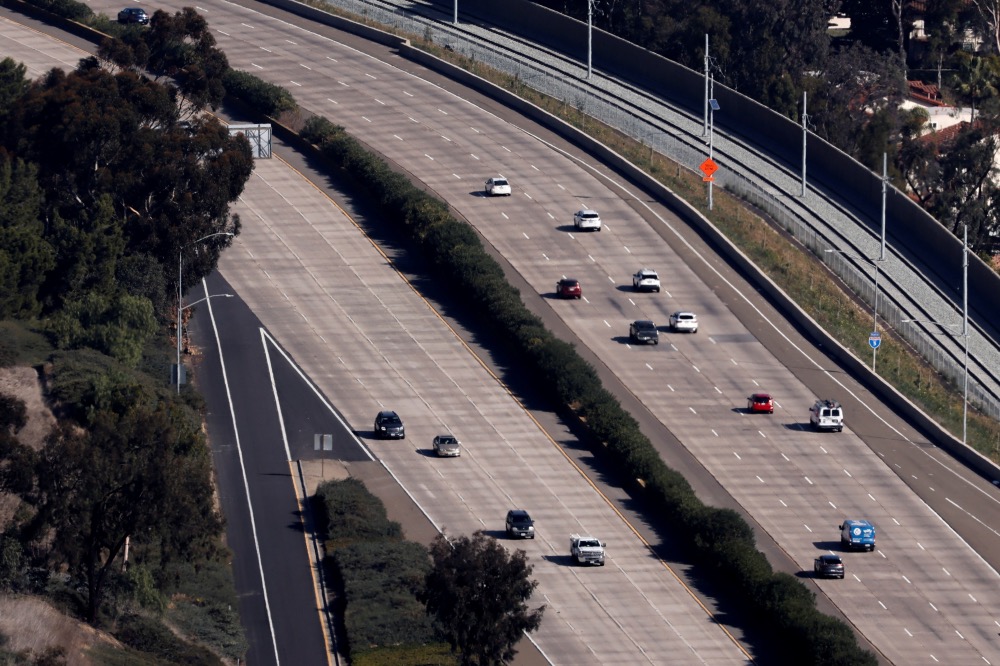New York, US/London, UK
Reuters
Coronavirus-induced lockdowns caused annual traffic congestion to fall in most countries for the first time in at least 10 years, disrupting long-held traffic patterns like the dreaded morning commute to work, a report released on Tuesday showed.
Congestion declined sharply on the gridlocked roads of crowded cities, including Los Angeles, Bengaluru and Mexico City in 2020, location technology company TomTom said. The pandemic is expected to weigh again on traffic congestion this year, said Nick Cohn, TomTom’s senior traffic expert.

A low volume of traffic is shown after the new regional stay-at-home order was announced during the outbreak of the coronavirus disease (COVID-19) in San Diego, California, US, on 9th December, 2020. PICTURE: REUTERS/Mike Blake/File photo
“We’re going to see continued restrictions through the first half of the year, and I think we’re going to see a lot of ups and downs before we’re really getting back to any normal driving patterns and traffic activity levels,” Cohn told Reuters in an interview.
TomTom’s report is based on data from 416 cities in 57 countries. It has published its traffic index for 10 years.
The downturn in congestion in the United States was more prolonged compared with Europe last year because US coronavirus cases stayed relatively high during the summer and early fall, Cohn said.
In the United States, Los Angeles, New York and Miami were the most congested cities, though traffic in each city dropped from 2019 levels by 36 per cent, 30 per cent and 26 per cent, respectively, TomTom data showed.
Overall, Moscow was the most congested city in 2020, but traffic fell 8% from 2019. Bengaluru was the most-congested city in the world in 2019, but it fell to sixth in 2020 with nearly a 30 per cent of drop in traffic year-on-year.
Traffic in London and Paris was almost 20 per cen t lower than in 2019, and traffic in Madrid and Rome dropped 35 per cent and 29 per cent, respectively. Berlin experienced only a six per cent traffic fall compared with 2019.
Traffic patterns like the daily morning commute to work – a mainstay for decades – could shift because of increased flexibility around remote work for employees, Cohn said.
“In the US, Canada and Mexico, if you look at peak travel patterns, the morning peak seems to have melted away,” he said. “We have never seen that before.”
Traffic congestion during rush hours last year decreased by 25 per cent globally, said Stephanie Leonard, TomTom’s head of traffic innovation and policy.
As more people return to office following vaccine distributions, congestion levels could rise if commuters choose to avoid public transit and drive to office instead, said John Kilduff, partner at Again Capital LLC in New York.





